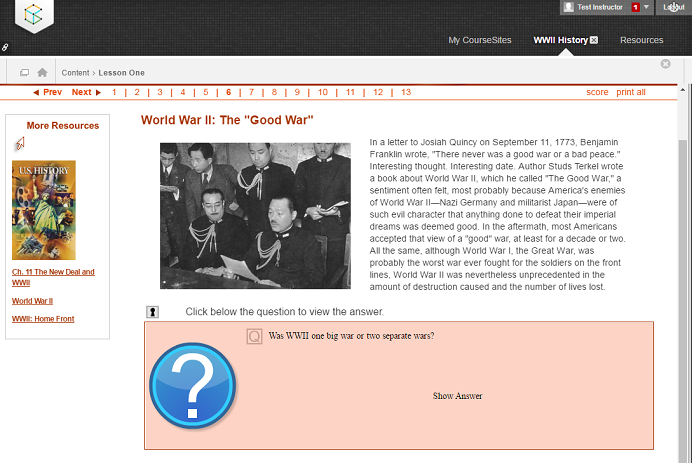Quick quiz – what do these 3 images have in common?

Each of these screenshots shows rich, interactive content from a third-party educational courseware product being played from within a traditional LMS. And the learning experiences that these types of products can provide is often vastly superior to what can be built using the content tools that most LMSs natively provide.
Over time, these products are adding more and more features that one might normally expect to see in a LMS – giving weight to Norman’s Law of E-learning Tool Convergence:
Any eLearning tool, no matter how openly designed, will eventually become indistinguishable from a Learning Management System once a threshold of supported use-cases has been reached.
While I am not attempting to redefine courseware or jam any the above products into a specific named category, these systems often feature better grading options, more pedagogically-relevant assessment, and specialized reporting and analytics that surpass those available directly within the LMS. (They do, however, generally maintain the ability to sync grades back to the LMS and leverage its authentication and enrollment/rostering capabilities.)
Much like shadow IT , these systems can often be implemented by single instructors or departments. They can also offer value beyond what the enterprise-provided solution is able to the point where they are becoming so capable one has to begin wondering – can they begin to replace the LMS on their own? After all, these systems are typically plugged into LMSs, often provide better experiences than LMSs, and often take over a large chunk of the responsibilities that traditionally reside inside the LMS. And they can even offer additional capabilities that aren’t yet provided very well by LMSs such as nuanced learning analytics capabilities and content formatting that adapts seamlessly to mobile and tablet formats. At what point do these learning tools effectively become “Shadow LMSs?”
The question I have in my mind today is if LMSs will one day meet the same fate as portals. That is – promising in concept, and maybe worth it if you put a lot of effort into them, but of varying utility in general practice. In the future, will it still be worth the complexity of having a LMS in the middle if the goal is to navigate the student directly to their learning experience?
-George Kroner (personal thoughts do not represent my employer’s)

